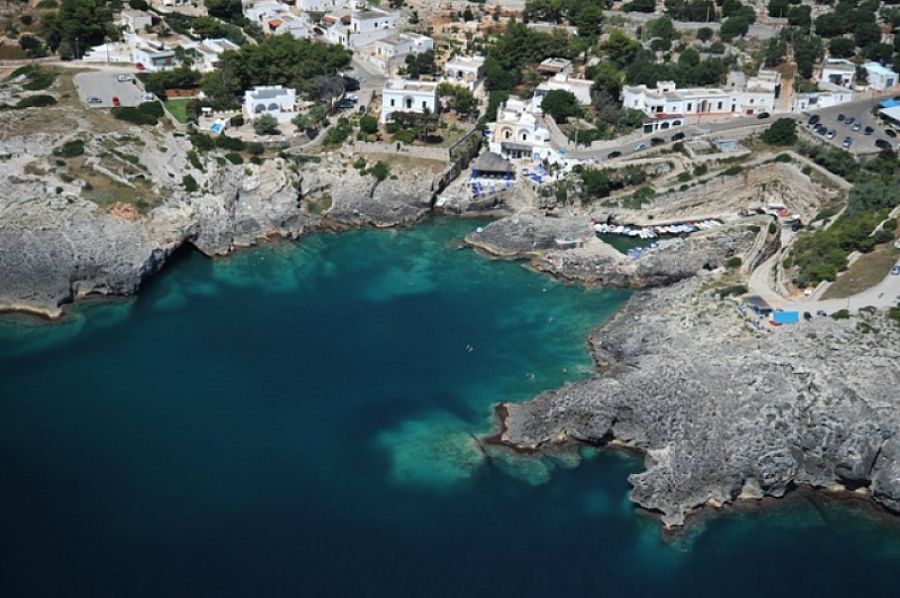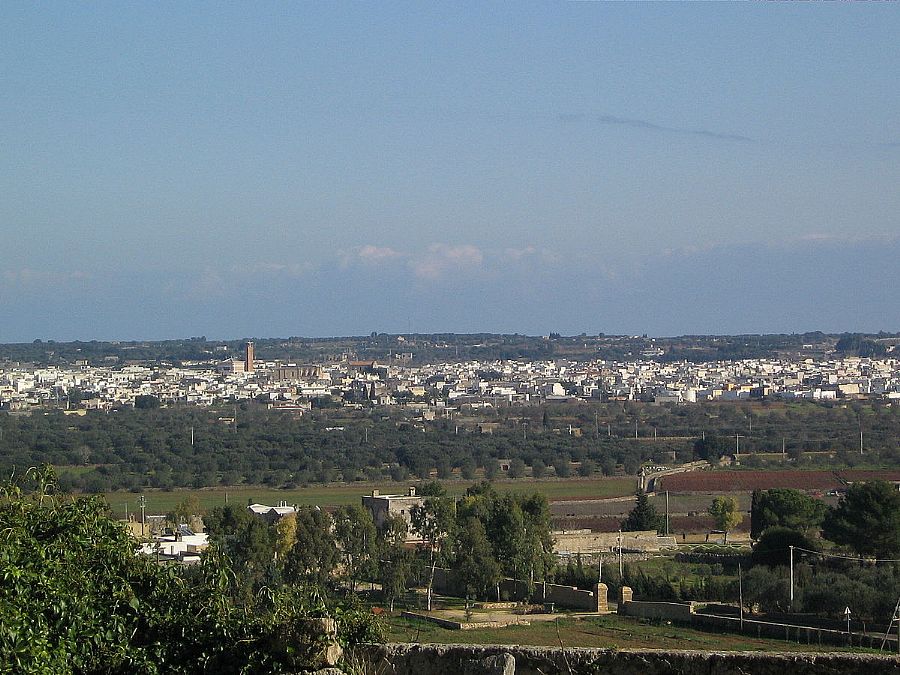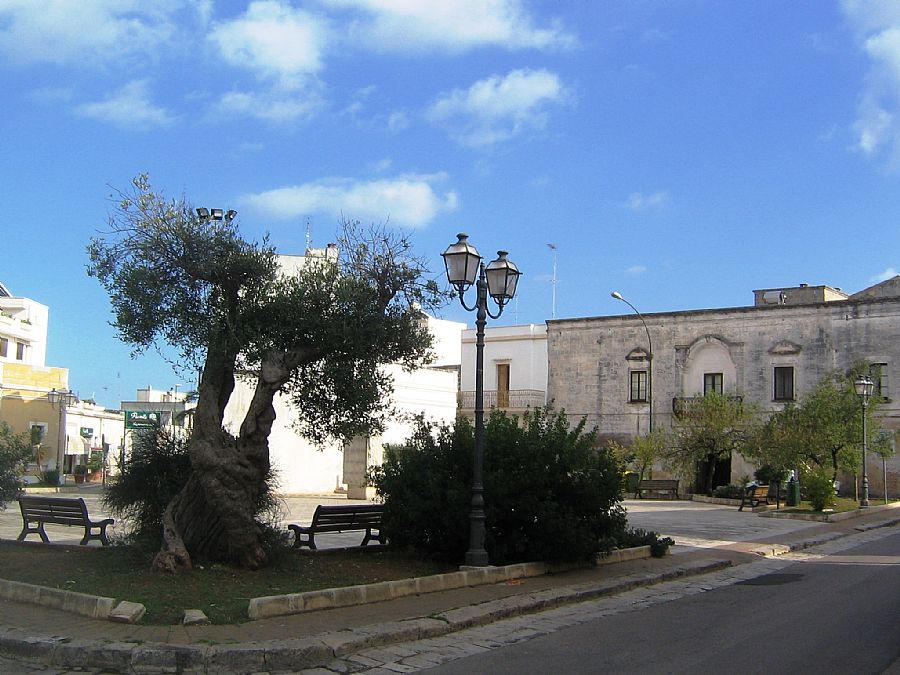Marina di Novaglie

Along Puglia's southly Adriatic coast, the rocky reefs highlight the intense blue of the water at Marina di Novaglie.The area saw ancient settlements by indigenous people and by the Greeks. Few traces remain now. The more recent history of basilian monks in the 9th century did leave some marks, most notably in caves that were used as rock churches. A few inscriptions can be seen in the area of the port. The area was prone to raids by Saracen pirates, but the caves and rocks also allowed hidden surveilance by the population to launch their own defensive attacks. During WWII the same landscape was used as a watch point. At Punta Rossa there is still a cement bunker that was used for coastal surveillance.
Since then, the area has become primarily a summer resort and fishing village. There are few sandy beaches as the coastline is rocky but between Punta Rossa and Punta Pizzo you'll find a sandy area to enjoy the water. The best way is take a boating excursion (or rent a boat) to enjoy the many sea grottoes and incredibly clear water. Walkers will enjoy the path called the Cipolliane trail, that starts where Via Vespucci ends, and takes you over the reefs to the Grotta Cipolliane.
Marina di Novaglie is administratively under Alessano, and that main city, along with Corsano, offer loads of services, dining, stores and cafes. Marina di Novaglie is a short drive from Santa Maria di Leuca, at the very tip of the heel.
Have a look at our holiday homes in Puglia.

 Amalfi Coast
Amalfi Coast Sorrento Coast
Sorrento Coast Tuscany
Tuscany Cilento National Park
Cilento National Park Lake Como
Lake Como Rome and Latium
Rome and Latium Umbria
Umbria Capri and Ischia
Capri and Ischia Venice
Venice Puglia (Apulia)
Puglia (Apulia) Liguria
Liguria Sicily
Sicily Lake Maggiore
Lake Maggiore Lombardy
Lombardy Sardinia
Sardinia Lake Garda
Lake Garda Abruzzo and Marche
Abruzzo and Marche Calabria
Calabria

